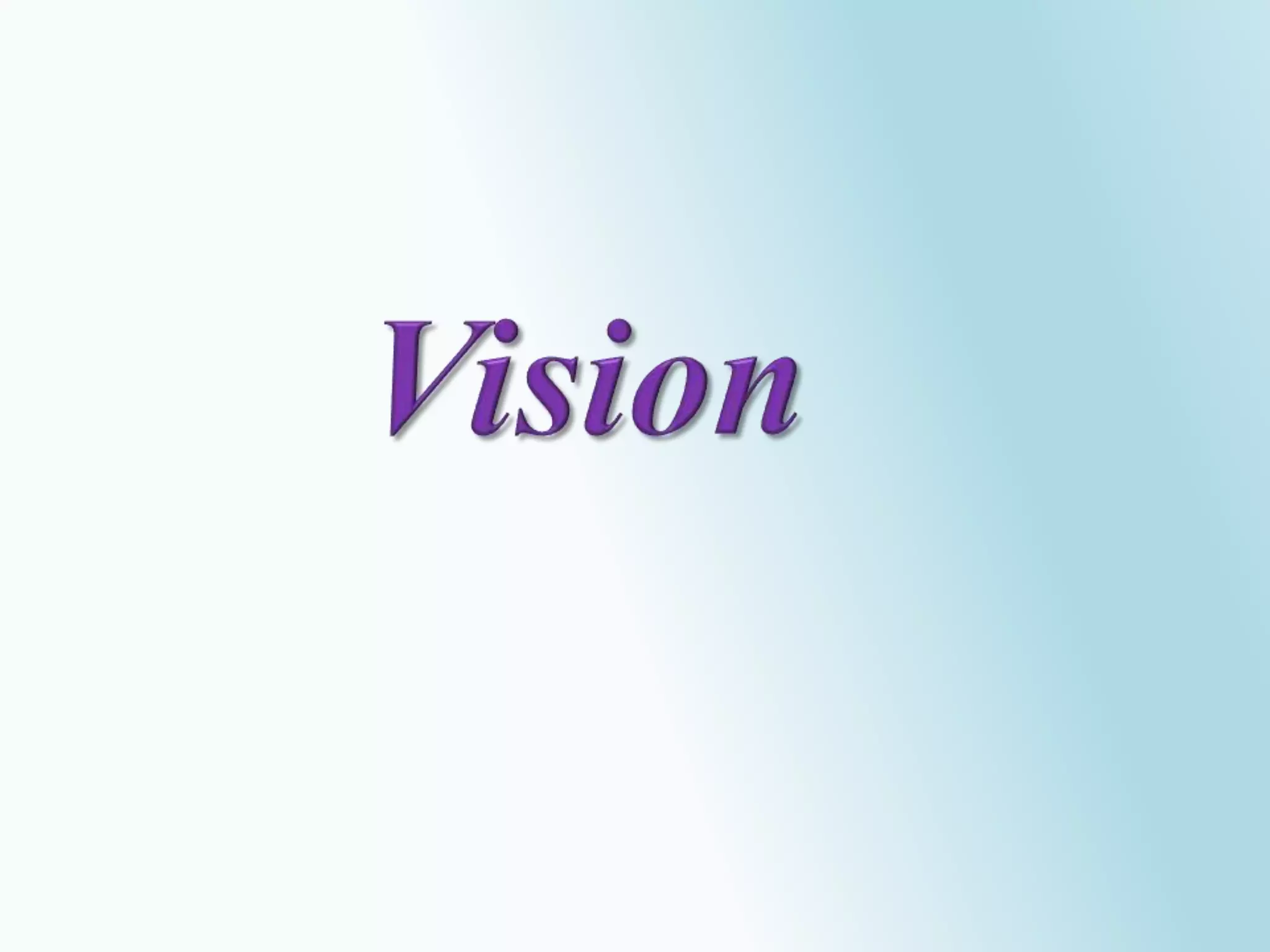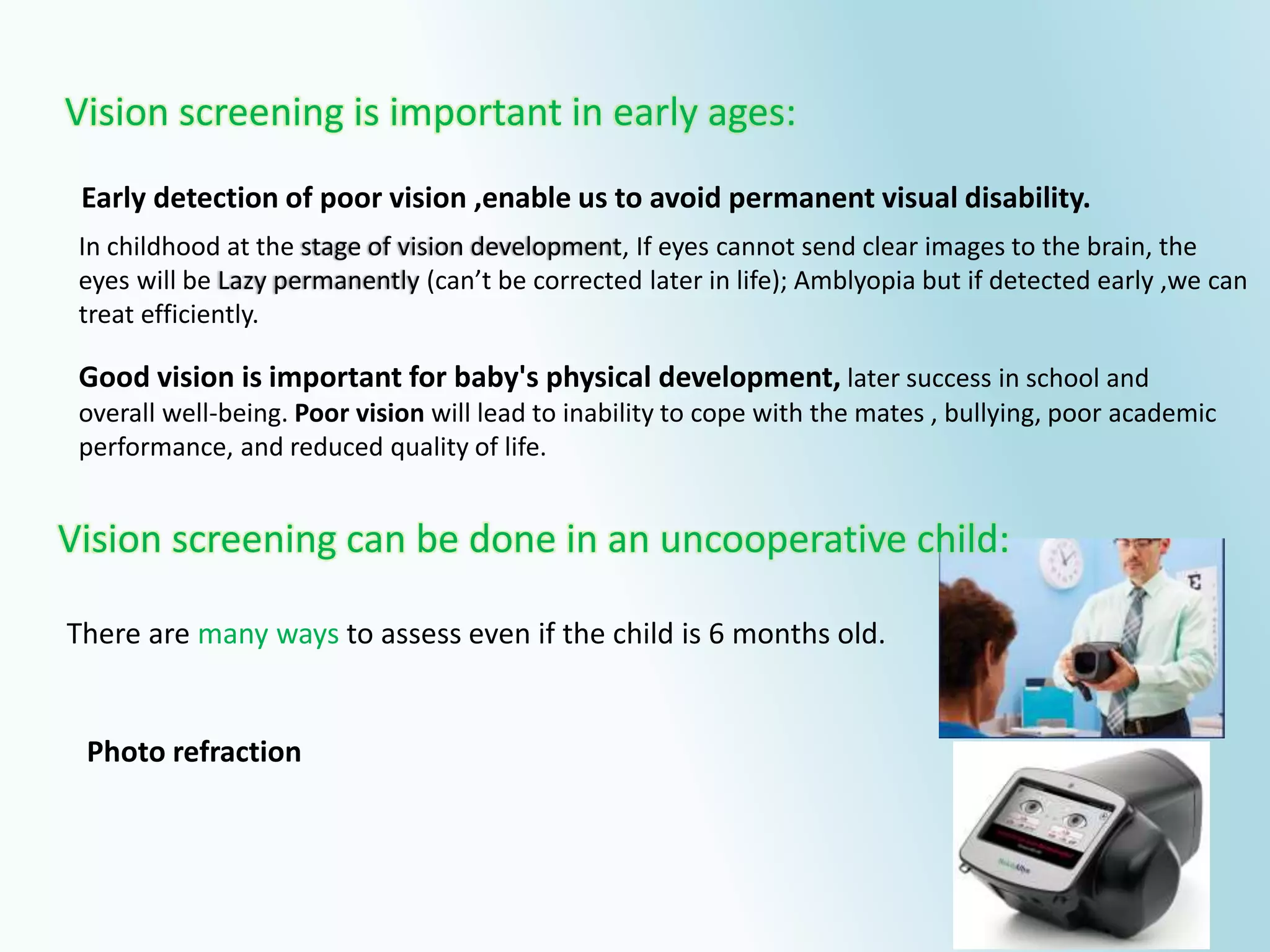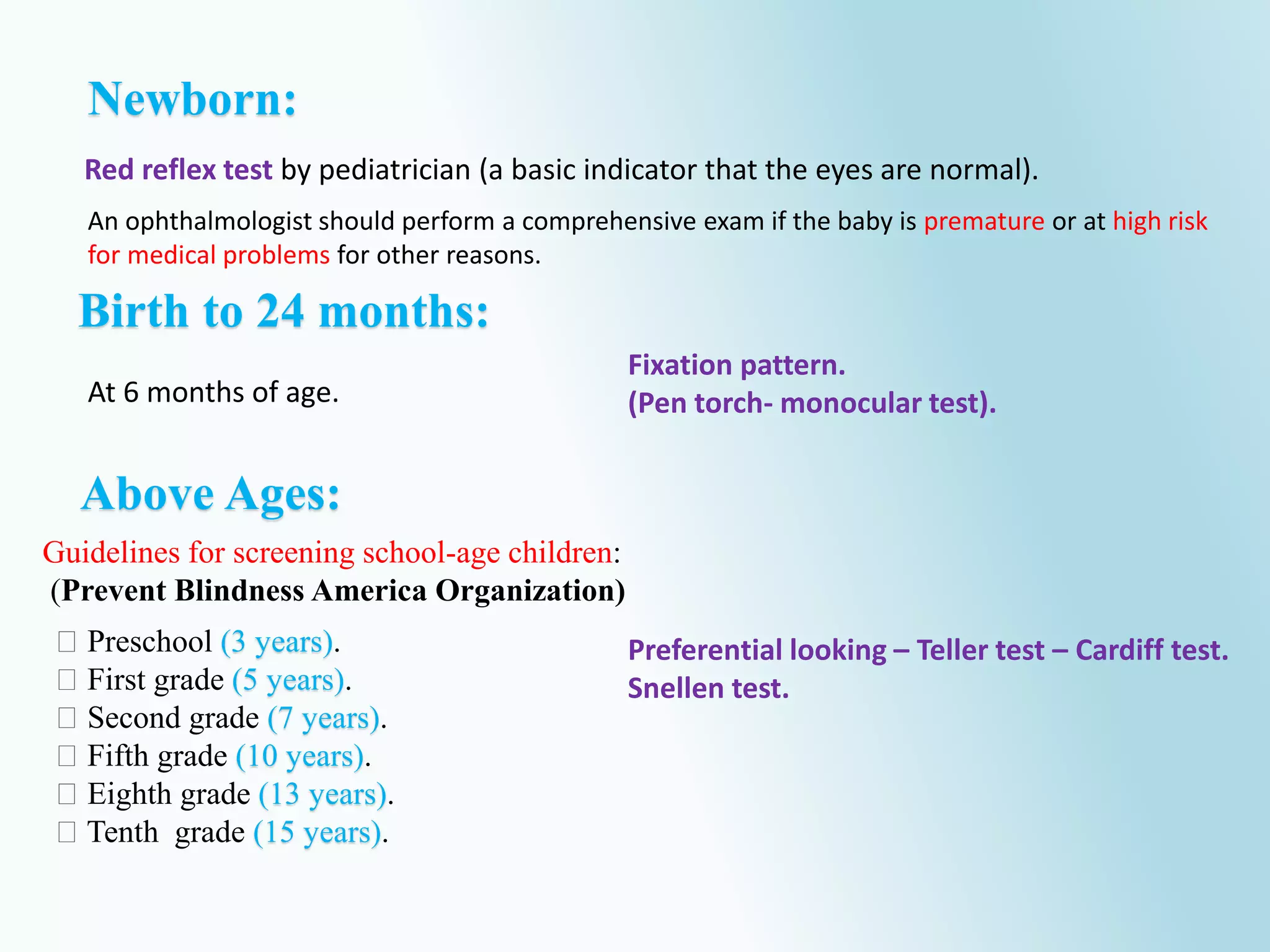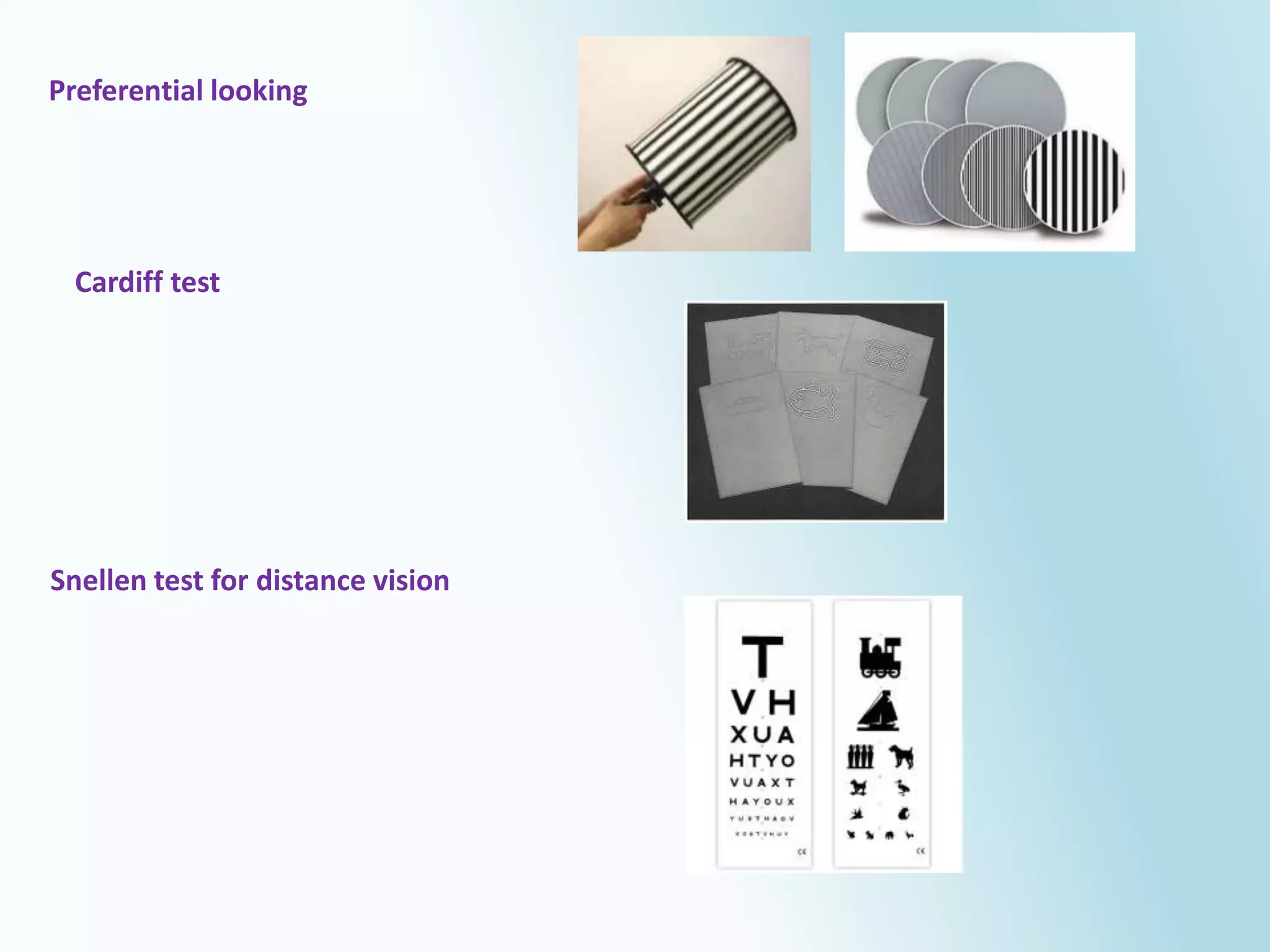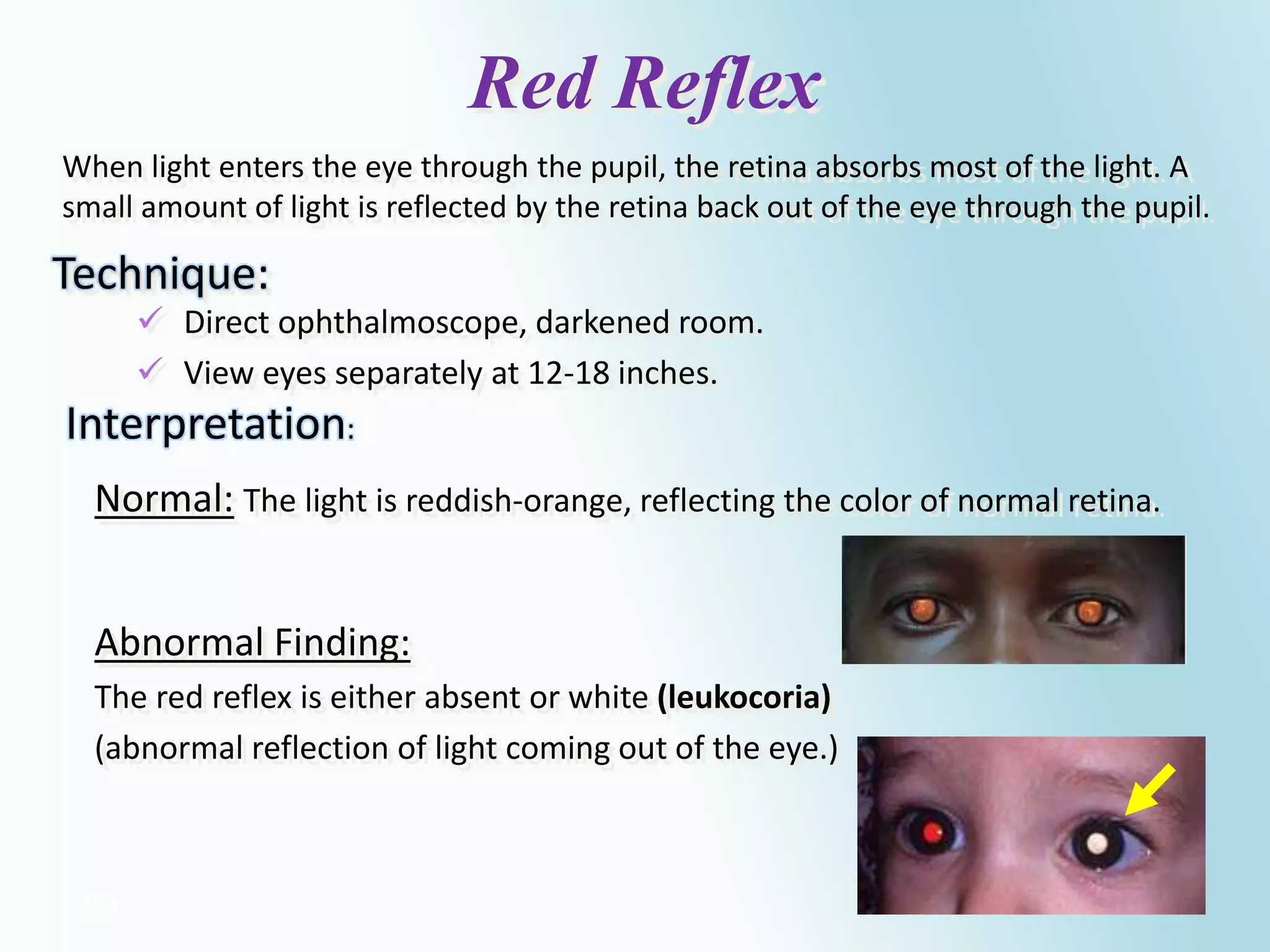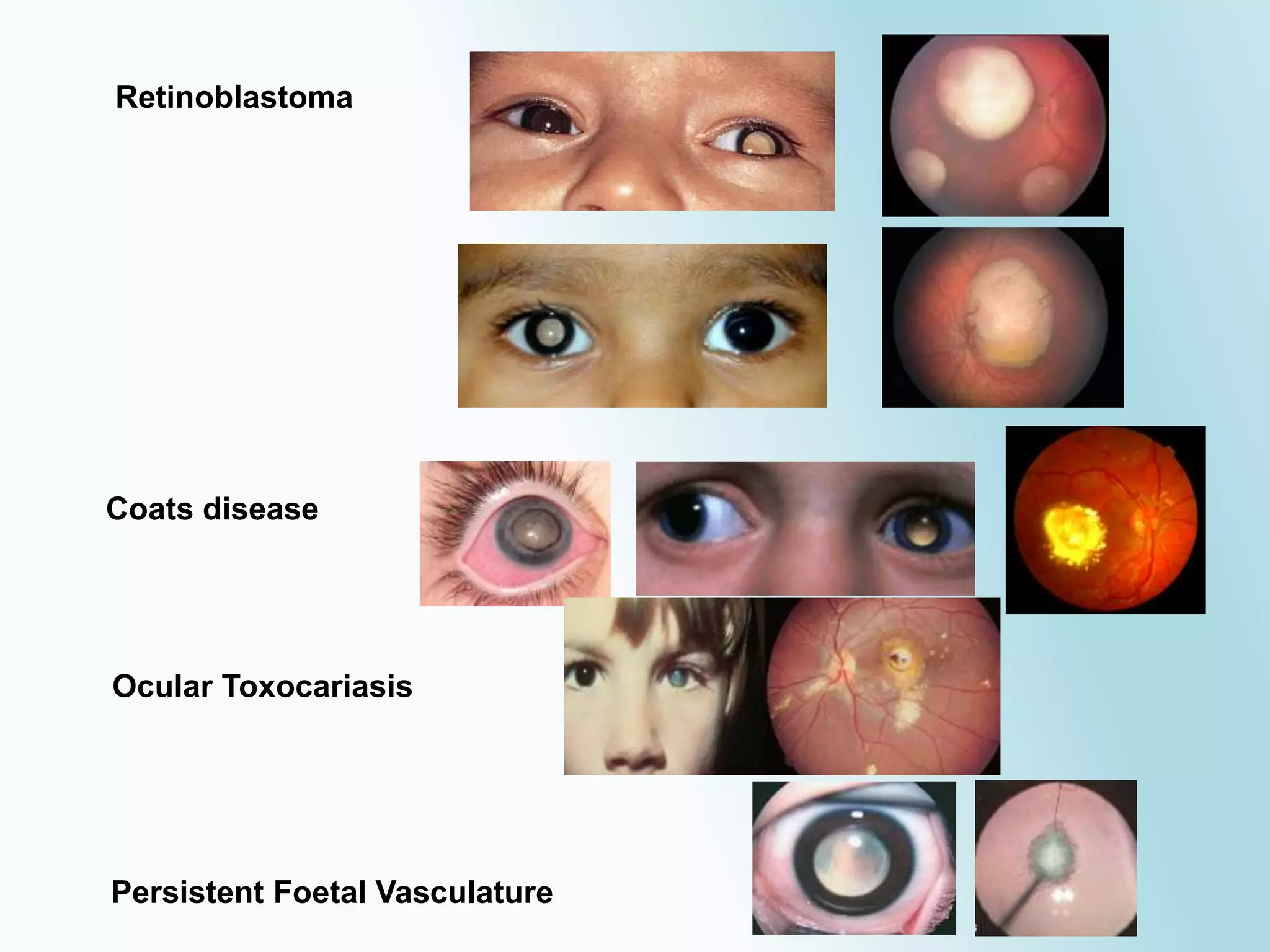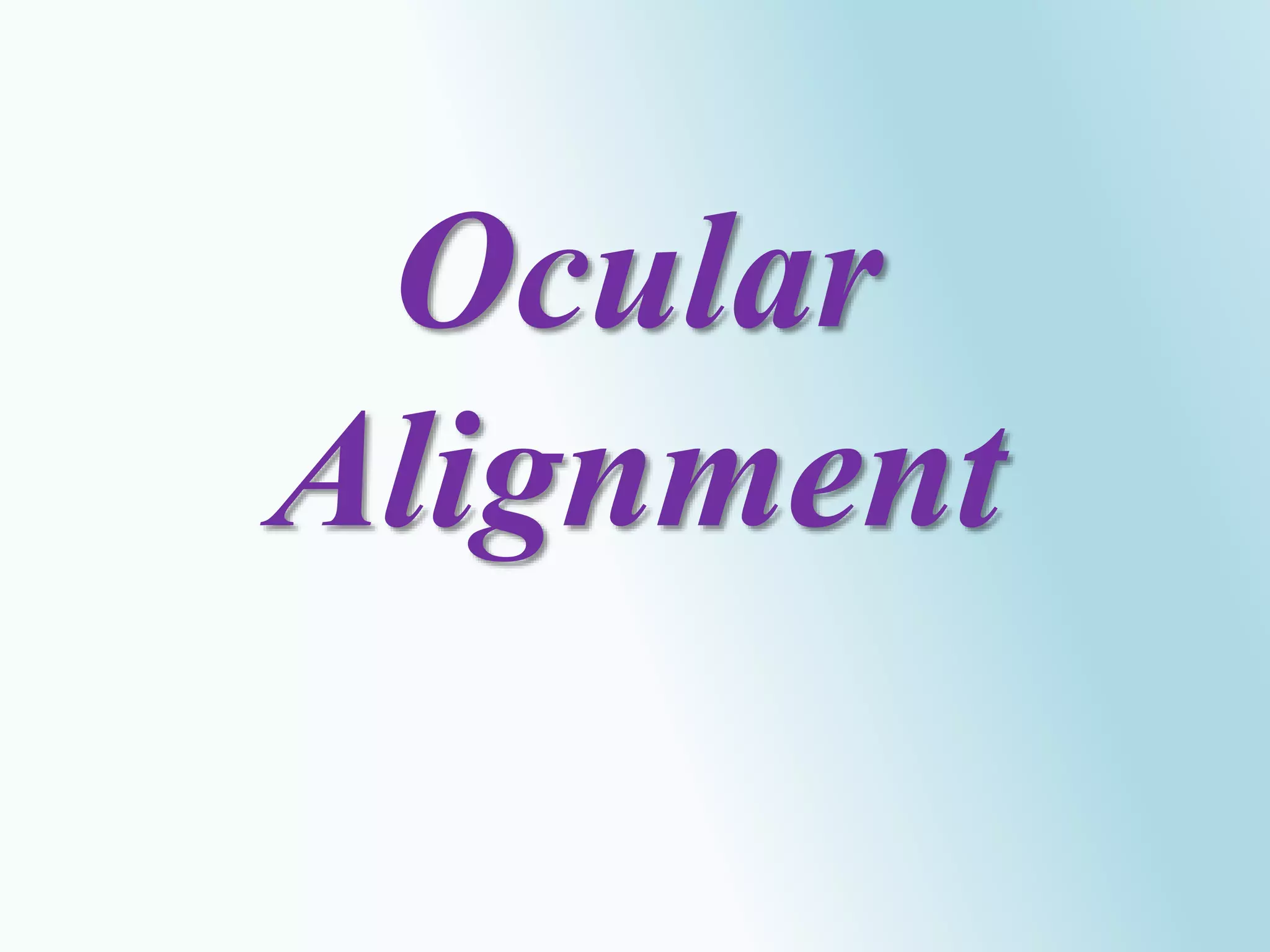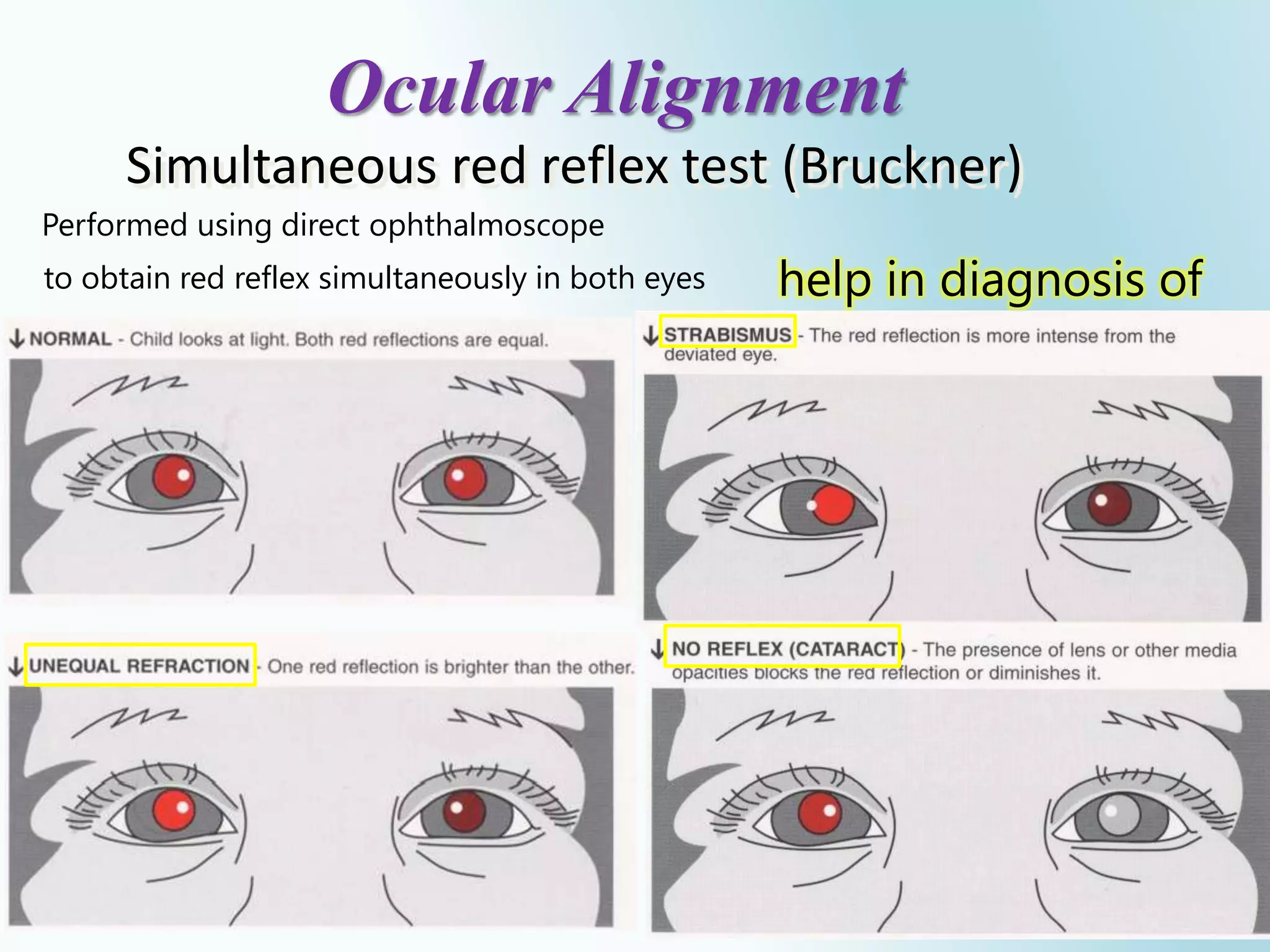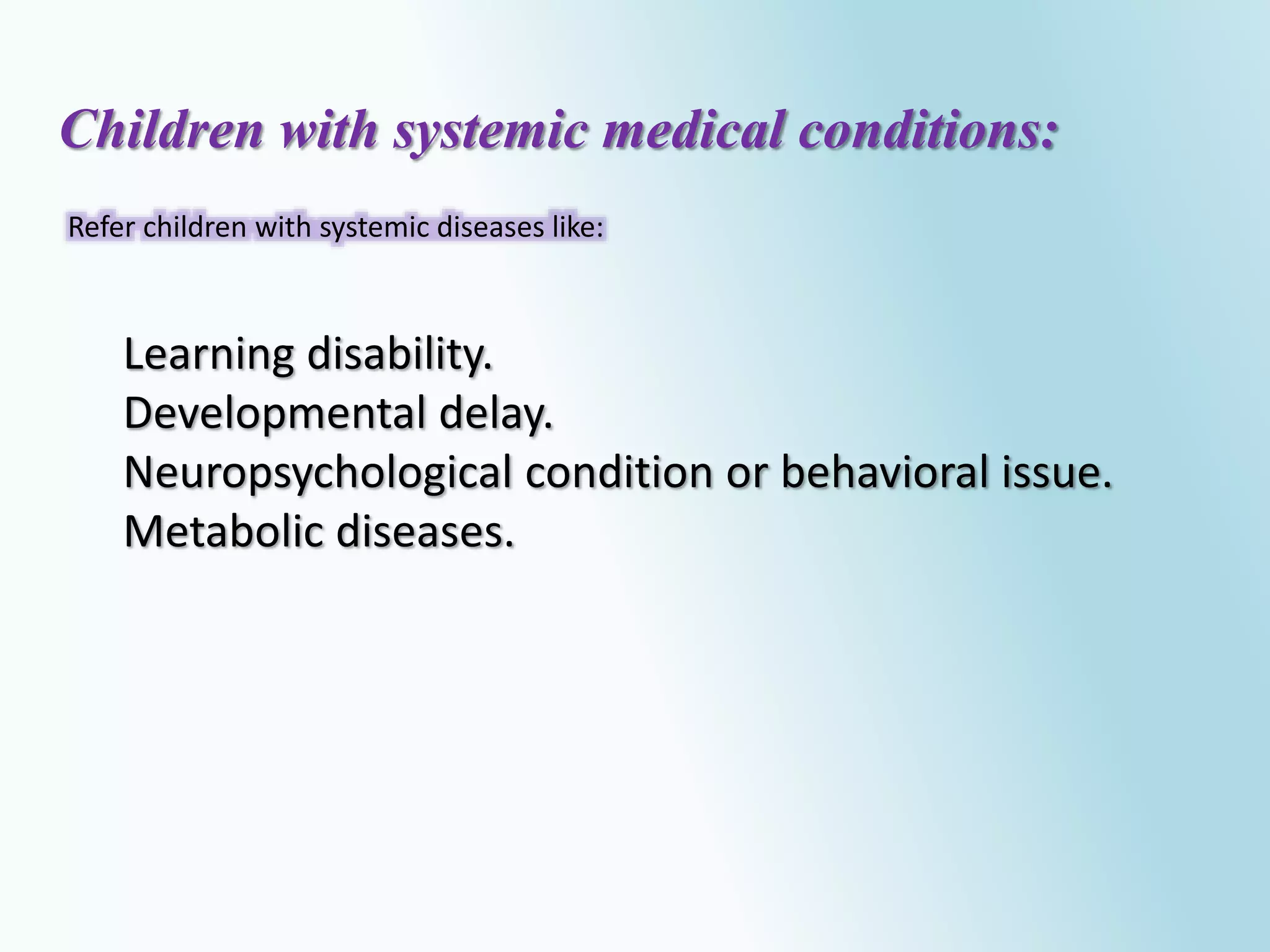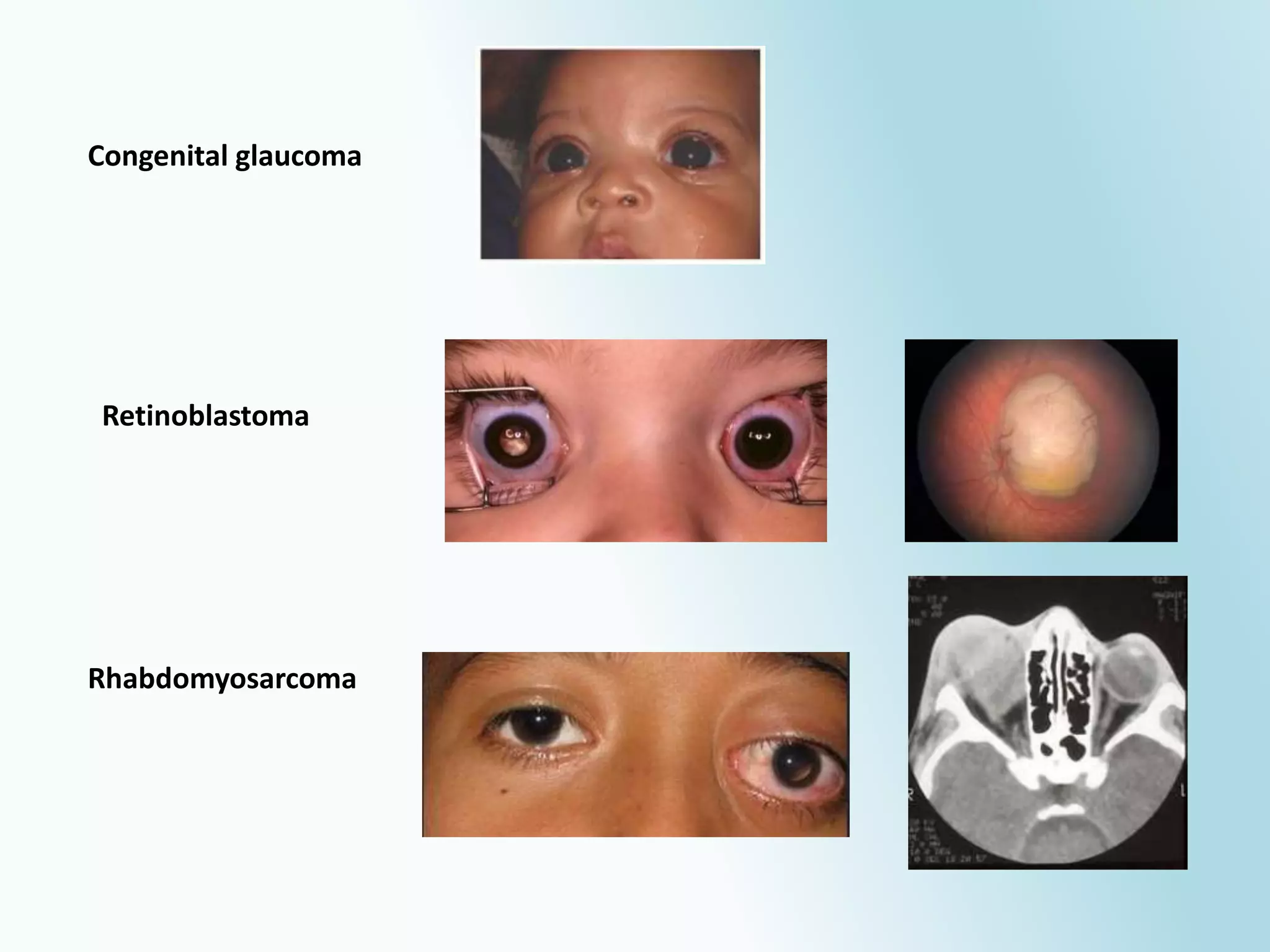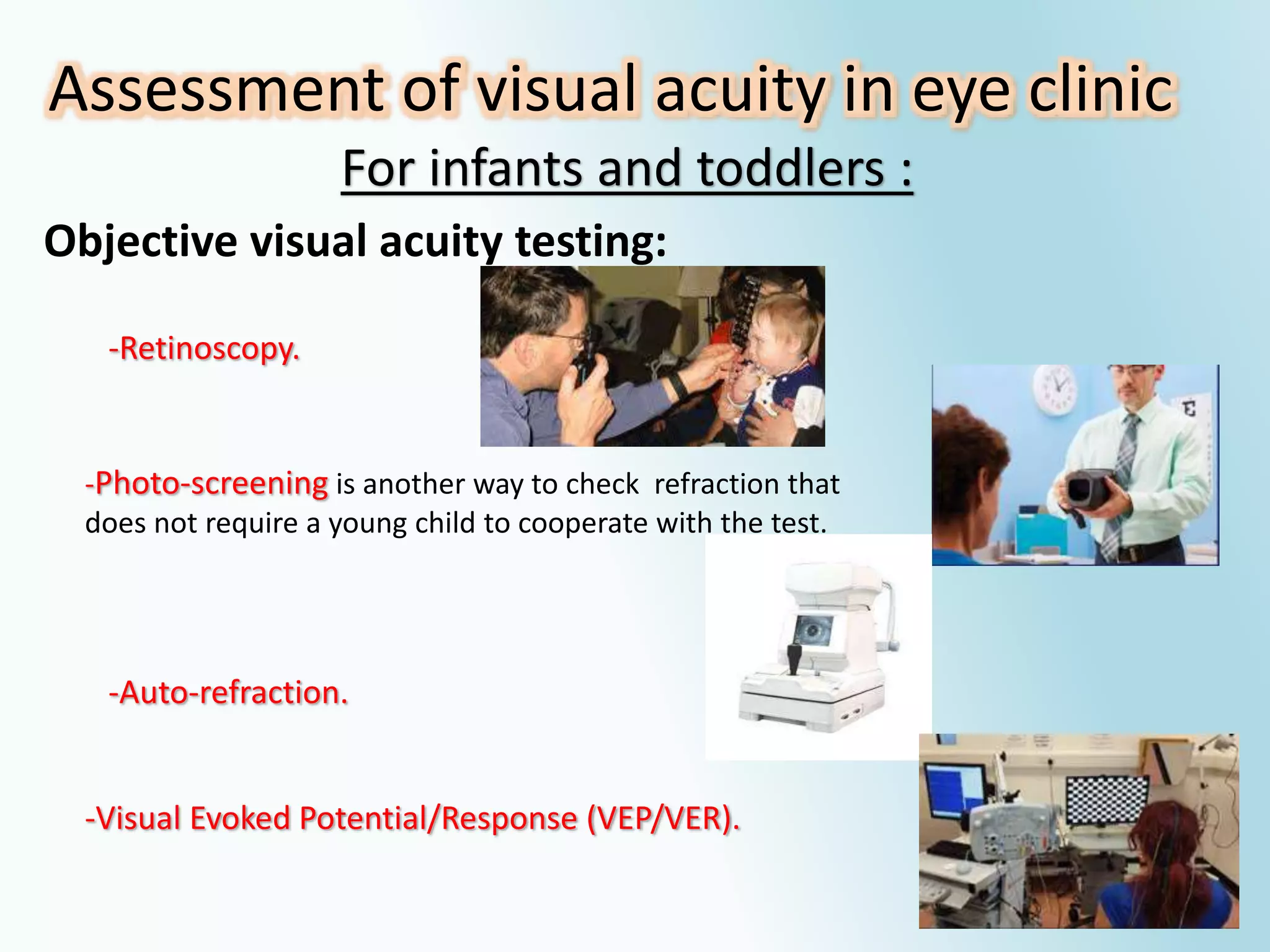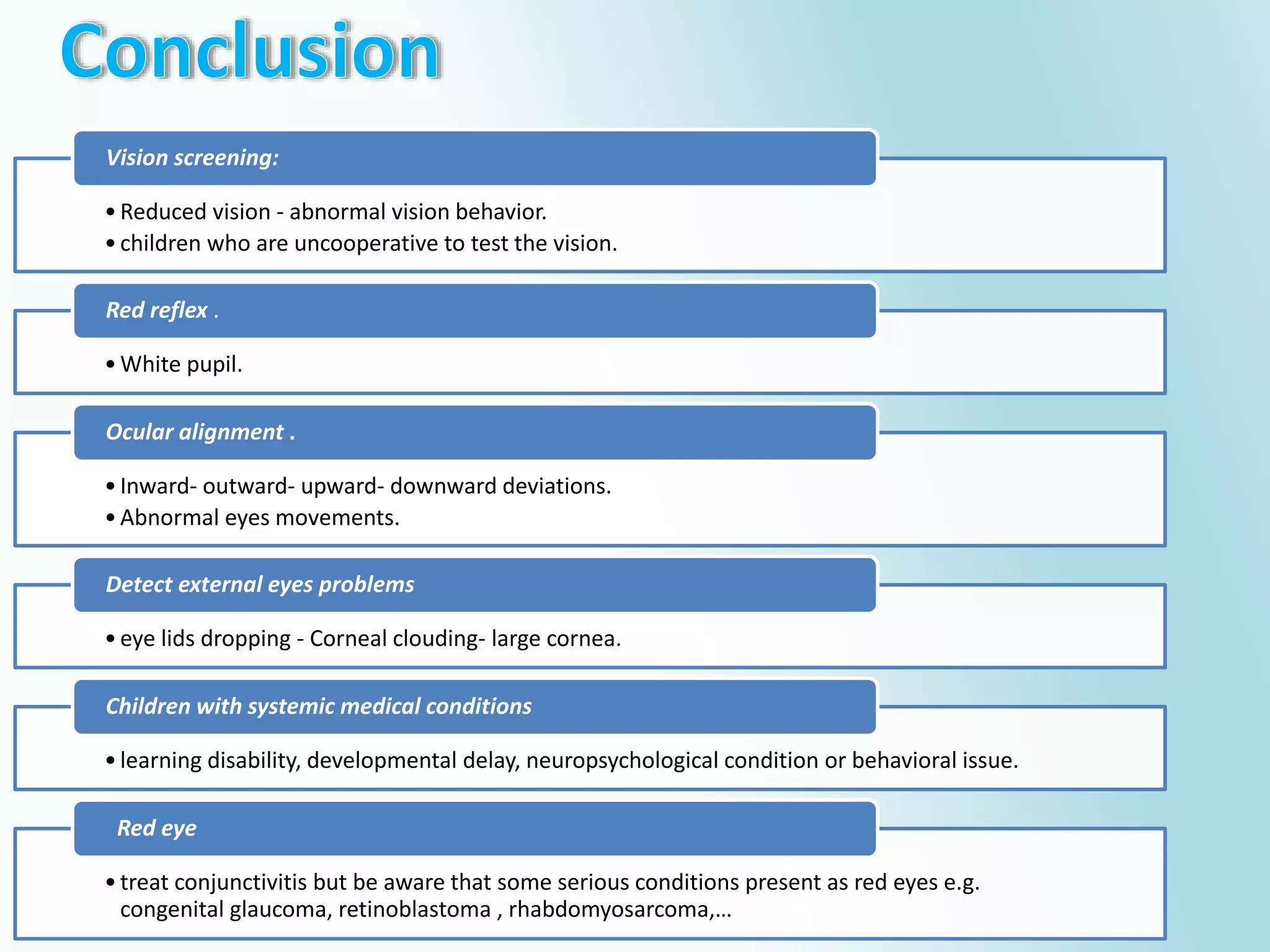Vision screening is important from birth through adolescence to detect conditions like amblyopia. Screenings evaluate visual acuity, ocular alignment, the red reflex, and for external eye problems. Conditions presenting with reduced vision or an abnormal red reflex require further ophthalmological exam including refraction and assessment of best corrected visual acuity. Early detection of vision issues is important, as amblyopia can become permanent if not treated during childhood.



